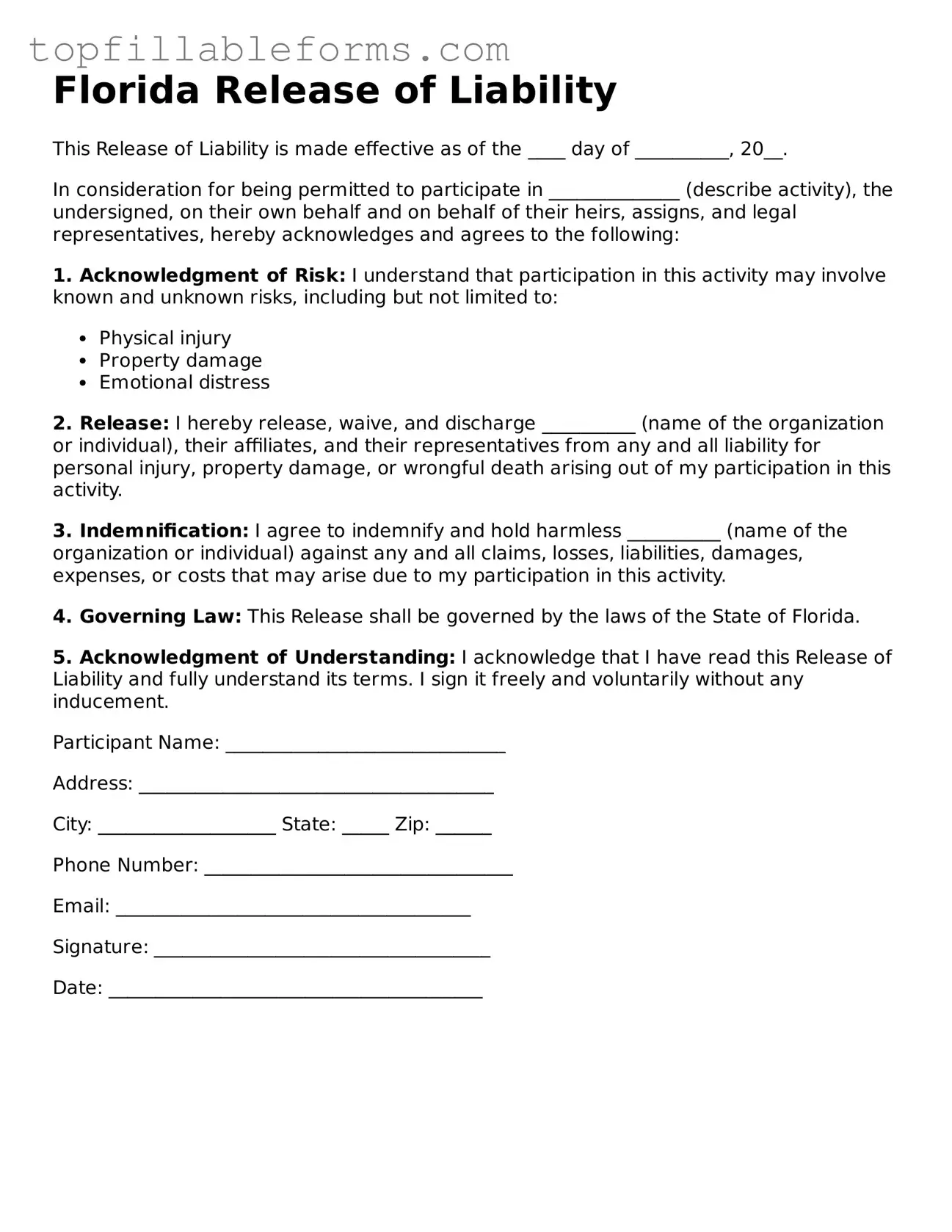Florida Release of Liability
This Release of Liability is made effective as of the ____ day of __________, 20__.
In consideration for being permitted to participate in ______________ (describe activity), the undersigned, on their own behalf and on behalf of their heirs, assigns, and legal representatives, hereby acknowledges and agrees to the following:
1. Acknowledgment of Risk: I understand that participation in this activity may involve known and unknown risks, including but not limited to:
- Physical injury
- Property damage
- Emotional distress
2. Release: I hereby release, waive, and discharge __________ (name of the organization or individual), their affiliates, and their representatives from any and all liability for personal injury, property damage, or wrongful death arising out of my participation in this activity.
3. Indemnification: I agree to indemnify and hold harmless __________ (name of the organization or individual) against any and all claims, losses, liabilities, damages, expenses, or costs that may arise due to my participation in this activity.
4. Governing Law: This Release shall be governed by the laws of the State of Florida.
5. Acknowledgment of Understanding: I acknowledge that I have read this Release of Liability and fully understand its terms. I sign it freely and voluntarily without any inducement.
Participant Name: ______________________________
Address: ______________________________________
City: ___________________ State: _____ Zip: ______
Phone Number: _________________________________
Email: ______________________________________
Signature: ____________________________________
Date: ________________________________________
